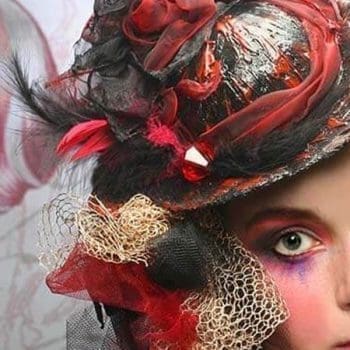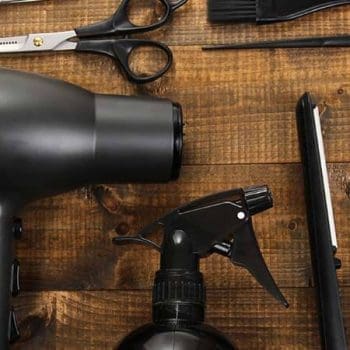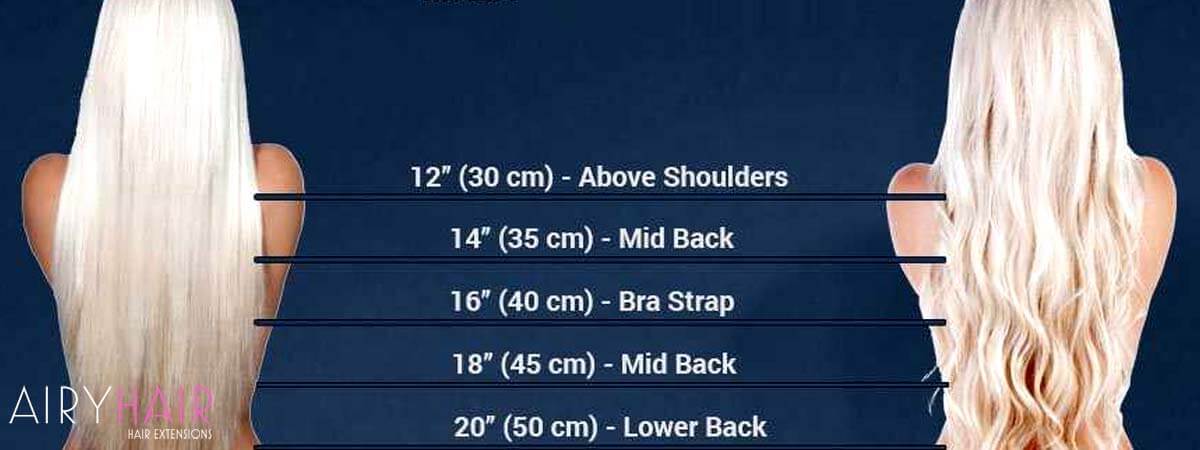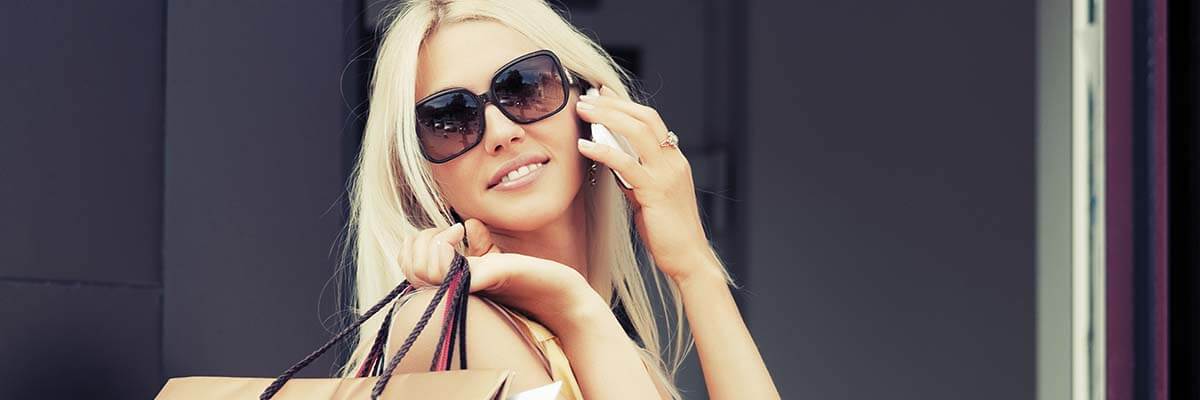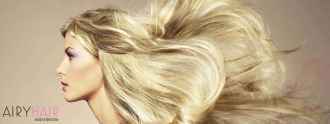Let’s talk about hair! Keratin extensions, for example, refer to all extensions installed with the hot fusion method. Small I or U-tipped strands with keratin on the root are glued onto the natural strands, one by one, by heating the keratin with a hot tool. Fusion extensions are becoming increasingly popular because they produce great results and look seamless.
They are one of the most realistic and natural-looking methods out there. Another advantage is that the keratin glue is perfectly safe for the hair and good for it. Removal of keratin extensions is also effortless and leaves the natural strands completely unharmed.
Quick Access
– Washing Keratin, I-Tip, Micro-Loop & Tape-In Hair Extensions
– Washing Clip-In and Flip-In Style Hair Extensions
– Styling Keratin and Other Hair Extensions
– Sleeping With Hair Extensions
– How to Wash a Wig?
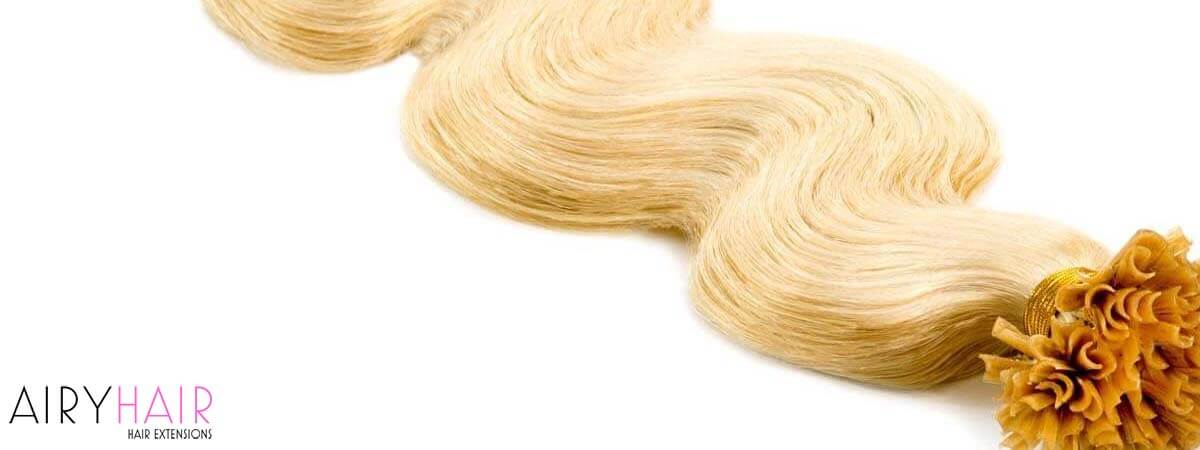
Since more and more girls are getting keratin, loop, or tape-in extensions, there is a lot of talk about how to wash and care for these extensions. The process is pretty simple and doesn’t require much time. There are just some simple rules to follow and habits to acquire, and you’re all set. The reason why washing your loop, tape-in, and hot fusion hair extensions properly is so important is because you can damage them otherwise. Because glue or loops are involved, you need to be extra careful when washing to increase the lifespan of your extensions and prevent them from any damage. Generally, you shouldn’t wash your keratin extensions too often, like every day; three times a week is more than enough.
If you want your extensions to last and look as beautiful as when you bought them, then follow this simple washing and care guide. It doesn’t matter if it’s keratin, hot fusion, i-tip, tape-in, or clip-in. We have them all.
(When you first get your hot fusion or tape-in extensions, you shouldn’t wash your strands for two days because the glue needs time to set.)
- Before you step into the shower, you need to brush and detangle your hair extensions. Be it tape-in, i-tip, keratin, or micro-loop extensions. It is of great help to have a detangling brush because it’s much better for the extensions. Comb starting from the ends, going up, and be very gentle while you do it.
- Now that your locks are tangle-free, you can proceed with the washing. You will need a very mild shampoo that doesn’t contain any strong chemicals like sulfate because it can damage the keratin or tape-in glue. A good option is a baby shampoo or one that is made specifically for use on extensions. Another product you will need is a leave-in conditioner and, optionally, some natural oils.
- Get your locks wet and apply your mild shampoo. Gently rub your locks to get them clean, and be very careful with the scalp where your hair extension bonds are. These could be tape-ins, keratin, or micro-loop bonds. Avoid scrubbing and touching the extension tips too much; gently massage to clean any oils. When you’re finished, rinse off with warm water.
- Now is the time to apply the leave-in conditioner. Make sure to apply it only to the bottom part of your locks and not to the scalp. If you apply a conditioner on your roots, your locks could turn out greasy, and you risk damaging your lovely extensions. Leave it on for at least 10 minutes and rinse off.
- Towel dry your extensions and let them dry naturally. This is the best and safest method. If you need your locks to dry immediately, use a blow dryer on very low heat and apply a heat protectant spray before using it. That will protect your keratin, tape-in, or loop extensions from heat and keep the glue intact.
- After your locks are dry, brush them one more time to reduce any tangling from the washing. And that’s it!
It’s important to know that one should not constantly wear clip-in or wire hair extensions. These are short-term tresses, and washing is much easier as a result.
- Take off hair extensions and put them in a bowl with lukewarm water.
- Add sulphate-free shampoo and swirl them around.
- Rinse a few times, gently pull them out of a bowl.
- Gently remove excess water with your fingers.
- Apply small amounts of hair conditioner.
- Use a special hair hanger or coat hander and hang your extensions
- Let them dry naturally.
That’s it! Don’t wash your extensions more than twice per quarter. They don’t produce oils, and since you wear them for an hour or two only, it’s easy to maintain any temporary hairpiece.
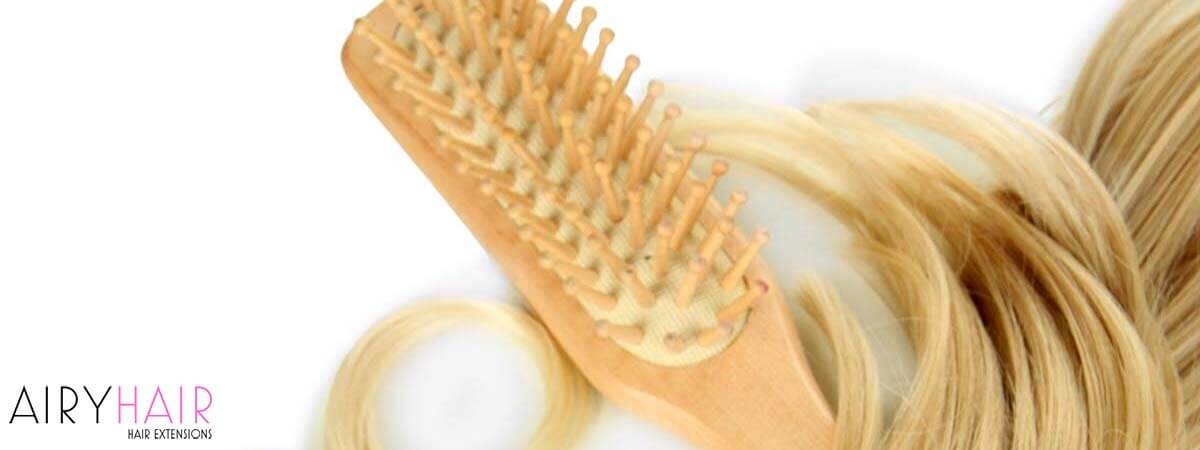
Now that you have washed your fusion extensions, you can proceed to style them. This depends on what look you’re going for, but there are a couple of ways that you can make your locks even more attractive.
You can apply some natural hair oils like argan or coconut oil to make your strands look more shiny and healthy. Take some in your fingers and brush them through your hair; don’t apply any to the roots.
If your keratin extensions are made out of genuine Remy hair, you also have the option to curl them. But before you take that curling iron, you first need to protect your strands. Apply a heat protectant spray, and you’re good to go. Making even the slightest waves can help blend your keratin extensions even better, and waves look perfect on long, voluminous locks. If you want to make a big statement, then go for kinky curls.
If you’re not into the curly glamorous look and want an everyday look, you can try braiding your strands or making a high ponytail. This is a great look for work, sport, or casual activities because braids and ponytails prevent the extensions from tangling and protect them from everyday activities. So, if you’re going for a quick run, get that ponytail on, and you’re set. This way, you have freedom of movement without fearing your extensions falling off or getting damaged.
Proper sleeping preparation is another important aspect of caring for your keratin extensions. Once they are all nice and clean, you want to prepare your locks for sleeping. It would help if you never went to bed with loose or wet hair. The best way to protect your extensions is to braid them. Everybody knows how to make at least a simple three-strand braid, enough for sleeping. Braids prevent your strands from tangling, matting, and straining. If your hair is loose, the keratin bonds could get damaged, shed, or even fall off when you turn and toss during sleep.
So, if you want those extensions to last, just make a braid before you go to sleep. It takes only a minute, but it helps so much. Another advantage of sleeping with braided hair is that brushing in the morning will take much less time. It will be almost perfect and tangle-free when you wake up and unbraid your hair.
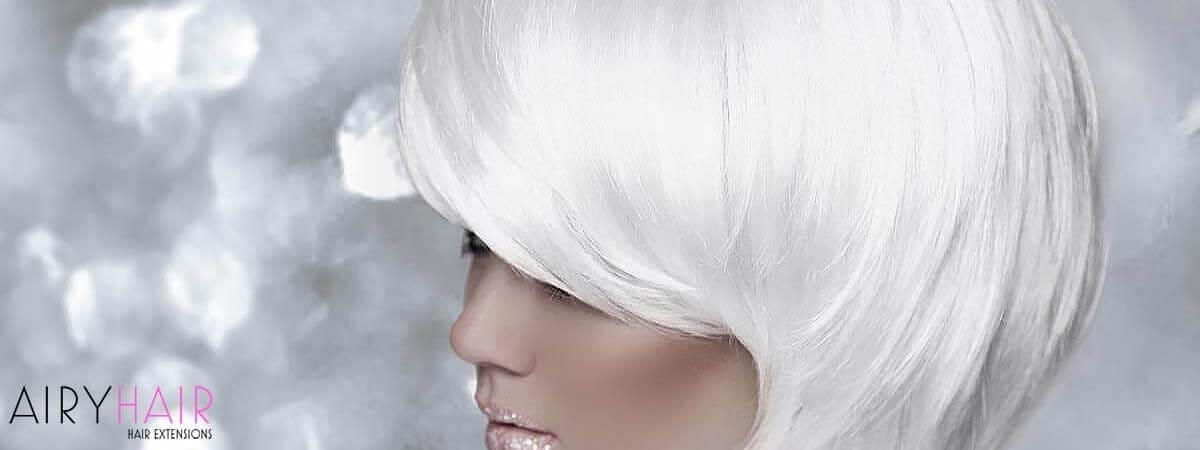
Regardless of the wig type you have, every wig should be maintained and kept in perfect condition. Hairpieces are not cheap, so it makes no sense to invest in them. Especially if you’re going to let these pieces get damaged and ruined. Not only that but neglected wigs look awful, so don’t be one of those girls with a dirty, tangled mess on her head. It cheapens the look and makes it obvious that it’s a wig. Fortunately, hairpieces are easy to take care of, and learning how to wash a wig properly will pay off in the long run. A nice and clean hairpiece can look like it just came out of the box. The luster will be restored, shedding and frizz will be reduced, and the risk of stretching or damaging the cap will be significantly reduced.
As you wear the wig, sweat and oil coming from your natural scalp get into the wig cap, and there can also be a lot of product buildup on the strands. All of that can get really messy if the hairpiece is not washed, just like with natural hair. The good news is that hairpieces don’t have to be washed as often as real strands; every two weeks is more than enough, but a lot of women wonder how to do it properly without damaging the wig. So here is a simple step-by-step process of how to wash a wig, regardless of the type, and keep it in perfect condition.
Step 1
Although this is quite obvious, it is worth noting that the hairpiece should be removed before washing it. Not only is it easier that way, but it also protects the wig and natural strands. So carefully remove the hairpiece (the removal method depends on the attachment used) and proceed to the next step.
Step 2
First, remove any frizz or tangles from the hairpiece using a loop brush. Then, go over the wig, making sure everything is nice and smooth. If you find knotted areas, be very careful and gentle while brushing them out. It is also a good idea to start brushing from the ends to the top, which reduces shedding and breakage.
Step 3
Fill the sink with warm water, not too hot and too cold. Submerge the hairpiece into the water until it’s completely wet. Put some shampoo in your hand and gently run your fingers through the strands, getting the product on the wig cap as well. We recommend that you use a shampoo that is made particularly for wig use, but any milder shampoo will do as well. Massage the hairpiece gently and avoid tugging, pulling, or harsh scrubbing. Make sure to thoroughly wash the wig cap because that’s the dirtiest bit since it soaks up everything.
Step 4
Rinse the shampoo out with lukewarm water and make sure there is no product residue. When shampoo is not rinsed out properly, the strands become greasy and coarse and lose their shine.
Step 5
Now that the shampooing is done, it is time to add some conditioner. It is important not to skip this step because the conditioned hairpiece looks shiny, lustrous, and smooth. Put some in your hair and apply it on the bottom part; avoid the roots. When a conditioner is rubbed all over the roots, it makes the strands very greasy, as well as the cap. Leaving the conditioner in for a few minutes before rinsing is a good idea.
Step 6
After the hairpiece is rinsed out again, squeeze the strands to remove excess water. You can also roll up the wig in a towel to remove more water.
Step 7
Now you can put some additional products. This step is optional, but we encourage you to try it because it might make the wig even more stunning and flawless. Because a wig doesn’t receive any natural oils, it is a good idea to add some macadamia oil, which is good for the hair. Depending on the wig texture, you can also add additional products that make the curly, wavy, or straight texture even more beautiful. Many women also like to use some wig mousse to style the wig while it’s still damp.
Although these additional products might make the hairpiece even more perfect, don’t overdo it; use every single thing that you have.
Step 8
When it comes to drying, wigs are best left alone to air dry. Although the use of a blow dryer is permitted on human hair wigs, heat is never good for the strands. If you have the time, place the wig on a wig stand and let it dry overnight.
Step 9
When the hairpiece is dry, it is a good idea to brush it one more time. As you wash the wig, the strands can get tangled up a bit, so it’s important to use a comb afterward as well.
Step 10
If your wig is curly and you notice that the texture has been slightly lost due to washing, you need to re-curl it. Use a curling iron, just like you would on your natural strands, and restore that nice texture. This is the last step of this process, and the last thing you need to remember is to re-wash the wig when you notice it gets dirty and never neglect to do that. Since the washing doesn’t need to be done more often than two weeks, there’s no excuse not to do it.


